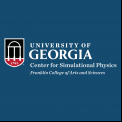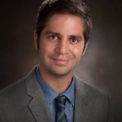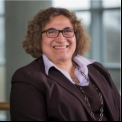Events Calendar View
-
CSP Lunch Seminar
Nov 16, 2021
Thermodynamics of grain boundaries from grand canonical sampling
-
Departmental Colloquium
Nov 18, 2021
Overview of Tritium Fuel Cycle Research at Savannah River National Laboratory
Recent developments, along with significant private investment, has spurred increased interest in fusion as a carbon-free source of energy. Hydrogen isotopes are the most promising fuel for a fusion reactor, but the development of the associated fuel cycle presents unique challenges and opportunities. Tritium, in particular, produces additional complexity due to its scarcity and radioactivity. In this talk, I provide an overview of recent and ongoing tritium fuel cycle research at SRNL in support of fusion energy. In addition, the recent management transition at SRNL includes strategic partnerships with regional universities in Georgia and South Carolina, including the University of Georgia. Therefore, I will also provide a brief overview of SRNL, opportunities for student internships, and highlight areas of potential collaboration.
Zoom link: https://zoom.us/j/98442775233?pwd=WVc3aHl6UmxSUVlTZDNVdStDRWxzQT09
-
CSP Lunch Seminar
Nov 30, 2021
TBD
-
CSP Lunch Seminar
Jan 18, 2022
Computational Studies Of Nanoparticles Interactions With Biomembranes
-
Departmental Colloquium
Jan 20, 2022
Effect of Processing on the Electrical Properties and Microstructure of Multiwalled Carbon Nanotube Films and Polymer Composites
Multiwalled carbon nanotubes (MWNT) with dimensions of 8-15 nm and 0.5-2 μm long were used to make a series of CNT films via vacuum filtration, spin coating and inkjet printing. The method of deposition as well as the substrate used (filter paper of different sizes, photopaper, glass) were found to have an influence on the arrangement of the nanotubes and their resultant electrical response. Using a combination of impedance spectroscopy, equivalent circuit modeling, and microscopy techniques, it was possible to describe in detail how the electrical properties change as a function of how the MWNTs are distributed on the porous substrates by varying the number of deposited layers (1-20) as well as the dispersion concentration (0.1 to 5 mg/mL) using the vacuum filtration method. In the in-plane, four different electrical responses were observed and modeled: (1) a substrate dominated spectrum representing unconnected MWNTs, (2) one that included bundle and junction responses as well as some inductances representing sparsely distributed MWNT networks, (3) followed by a parallel RL circuit for partially connected MWNT networks and (4) finally a series RL circuit for fully connected MWNT networks. In the thru-plane, only two different electrical responses were observed and modeled. The results for the in- plane and thru-plane properties were used to generate percolation curves that show that electrical conductivity can change as much as 10 orders of magnitude for the same exact MWNTs. Similar experiments were also carried out for films that were spin coated and inkjet printed. The specific nanotube arrangements and electrical response depend on the number of layers deposited but in principle the trends observed are the same given that we used the SAME starting nanotube materials. Our results indicate that not only do the characteristics of the nanotubes themselves play a role but also the structure of the underlying substrate and the details of how the films are deposited.
-
CSP Lunch Seminar
Jan 25, 2022
Higher-order phase transitions in the two-dimentional Ising model

Guest: Kedkanok Sitarachu, Center for Simulational Physics, University Of Georgia
Tuesday, January 25, 2022 12:45 pm - 1:45 pm
Location: Zoom Meeting
Page 113 of 121, showing 6 records out of 723 total, starting on record 673, ending on 678



